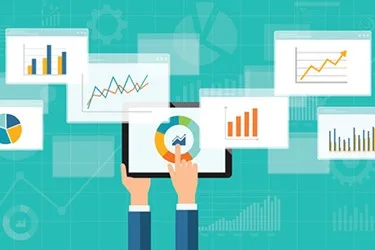Understanding Data and Evidence
Role of School Head
As a school head it is important for you to learn the skill of collecting relevant data and interpreting it for generating evidence. This will help you in encouraging your teachers to try out exercises that rest on evidence for improving teaching-learning processes and student learning outcomes. These skills are also useful in improving various other school processes. If any of your change projects is based on sound evidence, it will definitely yield results.
Let us understand the basics of data and evidence.
What is data?
Data are pieces of information. The term data is usually understood in terms of only numbers, such as the enrolment of girls and boys in the school, the number of children receiving different types of scholarships, or number of teachers who are regular or contractual. Numerical information may also be gathered based on the background information of children such as, age, sex, caste, class etc. The achievement scores of children in different subjects is also another form of numerical information which qualifies as data.
Do you think data is only numeric information?
In school, you are dealing with humans, be it students, teachers, non-teaching staff, community members, parents etc. Each of their voices, opinions, ideas, experiences also count as valuable data that can help you and your team in gathering evidence for school change. Qualitative information is thus an important form of data.
For example, you are concerned about a child who has come to school after a week. While talking to her, you may gauge the expressions and observe that she is upset or unwell. What you observe also counts as a piece of information. You may then talk to her during the day and find out reasons behind her absence, thus collecting more information (data).
Look at another example. One can develop a case study of a child with special needs, charting her childhood experiences, her challenges and learning needs in a school and the expectations that she has from her peers and teachers. Each of this information will count as data in this context.
In a nutshell, data are information that cover a wide range, from numbers, to behavioural responses, voices, opinions or even body language, especially in a context which deals with human beings. All of this can together be useful in studying a particular phenomenon.
What is Evidence?
Data in itself can provide you with lots of information, but it is not meaningful unless you process it or use it for explaining a particular phenomenon. For example, you want to know:
1. What are the scores of girls and boys in mathematics in a particular class?
2. How have the low achievers fared in the second unit test over the previous one?
You have a list of students with their scores in mathematics of this particular class. This is raw data. In order to look for answers to the above questions, you need to organize raw data into simple statistics, one that tells you the average score of boys and girls in mathematics and second that compares the average score of low achievers between two unit tests. Once the raw data is processed into meaningful statistic then one can derive inference on the comparative scores of girls and boys or know if there has been an improvement in scores of low achievers from before.
As this simple example shows, one needs to be able to process data and convert it into a new knowledge that provides answers, or proof for a particular phenomenon. Hence, converting data into evidence is an exercise which requires thinking and an inquiry into the various available data pieces to explore or problem solve the phenomenon.
Evidence is thus processed data which has a logical congruence. It can be used to explain a particular phenomenon or provide argument in favour of or against a claim or a hypothesis.
Read full Course with certification
Follow this link pslm.niepa.ac.in





